Harlequin Duck
- February 16, 2024
- 0 comment
The Harlequin Duck, a captivating waterfowl species native to North America, is renowned for its striking appearance and unique behaviors. Sporting a kaleidoscope of colors resembling the vibrant costumes of jesters, these ducks exhibit a remarkable blend of deep blues, chestnut browns, and bold whites arranged in intricate patterns across their plumage. Their compact, streamlined bodies, adorned with short bills and long tails, further add to their charm. Harlequin ducks thrive in fast-flowing streams, rocky coastlines, and swift rivers, making their presence known from Alaska and western Canada to parts of northeastern United States during breeding season.
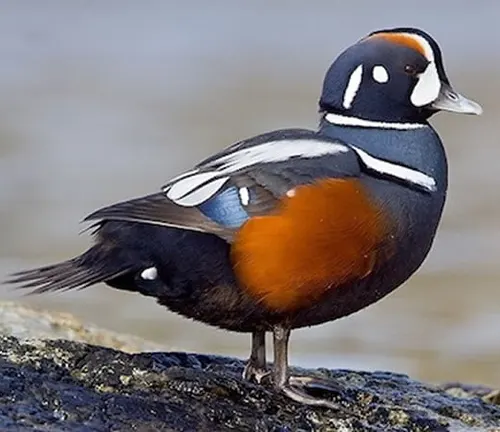
They are skilled divers and foragers, adept at navigating turbulent waters in search of aquatic invertebrates, small fish, and crustaceans. Breeding from late spring to early summer, males engage in elaborate courtship displays to attract mates, while females meticulously construct nests near water sources. Despite facing threats such as habitat loss and pollution, Harlequin ducks remain resilient, symbolizing the importance of preserving biodiversity and ecological integrity. As ambassadors of the avian world, they continue to enchant observers with their beauty and grace, reminding us of our responsibility to safeguard their habitats for generations to come.
| Specifications | Details |
|---|---|
| Scientific Name | Histrionicus histrionicus |
| Common Name | Harlequin Duck |
| Size | 14 to 18 inches in length (35 to 46 centimeters) |
| Weight | 1 to 1.5 pounds (0.45 to 0.68 kilograms) |
| Plumage | Males: Vibrant colors; Females: Mottled brown |
| Habitat | Fast-flowing streams, rocky coastlines, swift rivers |
| Range | Alaska, western Canada, northeastern United States |
| Diet | Aquatic invertebrates, small fish, crustaceans |
| Breeding Season | Late spring to early summer |
| Nesting | Near water sources, lined with down feathers |
| Conservation Status | Least Concern (IUCN Red List) |
| Threats | Habitat loss, pollution, climate change |
| Lifespan | 10 to 15 years |
A Colorful Gem of the Avian World
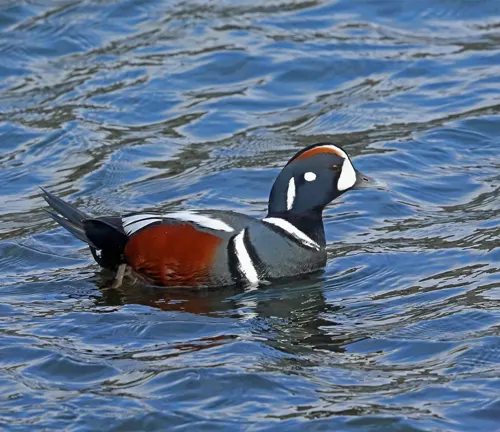
Harlequin ducks, known for their striking appearance and unique behaviors, are among the most captivating waterfowl species found in North America. Let’s delve into the fascinating world of these beautiful birds and explore their characteristics, habitat, conservation status, and more.
Physical Characteristics
Coloration
Harlequin Ducks exhibit a striking and vibrant coloration, particularly in males. Males display a kaleidoscope of colors including deep blues, chestnut browns, and bold whites arranged in intricate patterns across their plumage, reminiscent of the colorful costumes worn by jesters. In contrast, females have a more subdued appearance with mottled brown plumage, providing camouflage to blend in with their surroundings. This distinct coloration serves various purposes including mate attraction, camouflage, and species recognition.
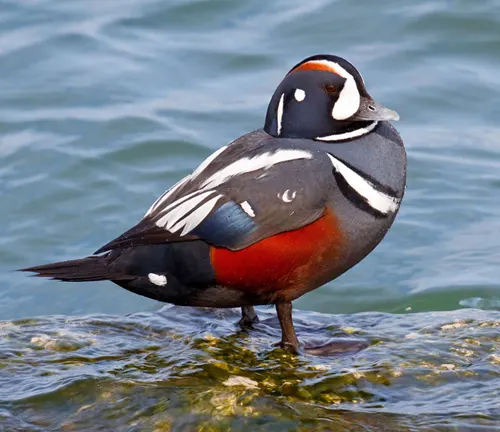
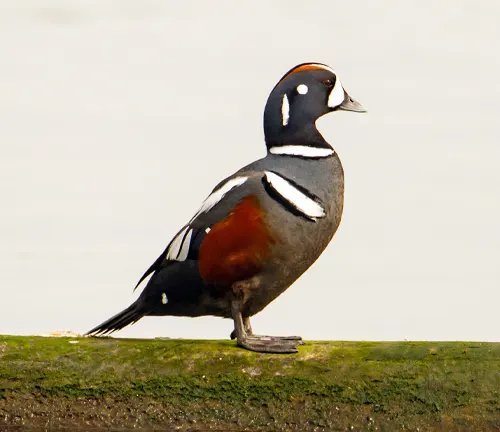
Size and Shape
Harlequin Ducks are characterized by their compact and streamlined bodies with distinctive size and shape. They typically measure around 14 to 18 inches in length (35 to 46 centimeters) and weigh between 1 to 1.5 pounds (0.45 to 0.68 kilograms). Males are slightly larger than females. Their bodies are sleek and aerodynamic, with short, stubby bills and long, slender tails. These features enable them to navigate swiftly through their preferred habitats of fast-flowing streams, rocky coastlines, and swift rivers, where they are often observed diving and foraging for food.
Habitat and Distribution
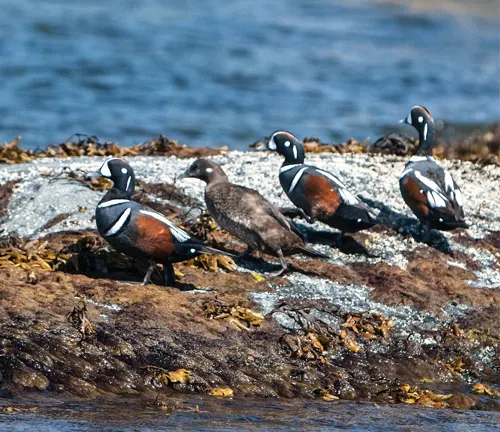
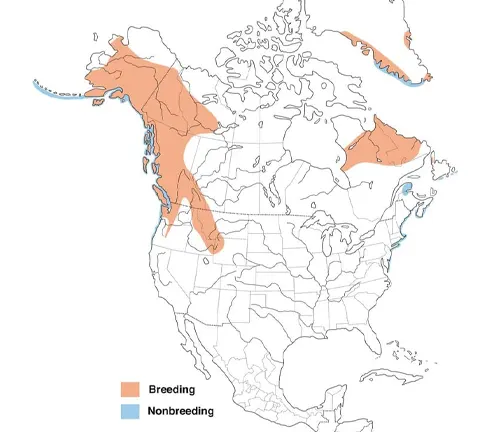
Harlequin Ducks are primarily found in North America, inhabiting a range of aquatic environments characterized by fast-flowing streams, rocky coastlines, and swift rivers. During the breeding season, they are commonly found in remote, rugged areas with access to clear, freshwater streams for nesting. These ducks prefer habitats with abundant vegetation for cover and nesting sites, as well as rocky outcrops and boulders for roosting and protection from predators.
Behavior and Diet
Harlequin Ducks are known for their unique behaviors and specialized diet, which reflect their adaptation to fast-flowing streams and rocky coastal environments.
Behavior



- Diving and Foraging: Harlequin Ducks are skilled divers and foragers, adept at navigating turbulent waters in search of food. They can dive to considerable depths, using their agile bodies and webbed feet to propel themselves underwater. Their streamlined shape and waterproof plumage enable them to withstand the rigors of swift currents and rocky substrates.
- Territoriality: During the breeding season, male Harlequin Ducks establish and defend territories in prime nesting areas. They engage in elaborate courtship displays to attract mates, showcasing their colorful plumage and performing intricate dances on the water. Females select mates based on the quality of their displays and territories, with successful males mating with multiple females.
- Social Structure: Outside of the breeding season, Harlequin Ducks are typically solitary or form small groups for foraging. They may congregate in larger numbers at favored feeding sites, where food resources are abundant. While they are not highly social birds, they may engage in interactions such as vocalizations and visual displays to communicate with each other.
Diet
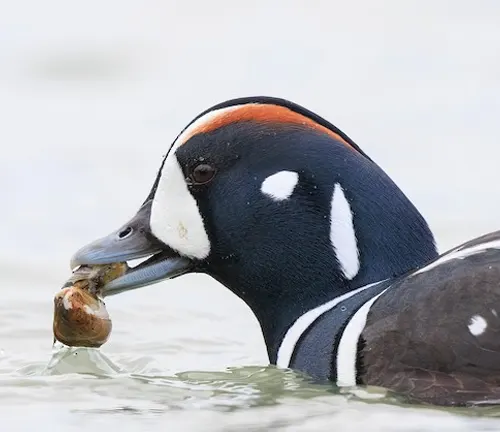
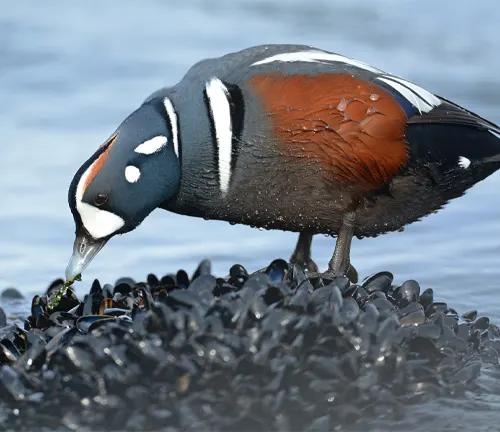

- Aquatic Invertebrates: The primary diet of Harlequin Ducks consists of aquatic invertebrates such as insects, mollusks, crustaceans, and aquatic larvae. They use their keen eyesight and diving abilities to locate and capture prey beneath the water’s surface, probing rocky crevices and underwater ledges for food.
- Small Fish: In addition to invertebrates, Harlequin Ducks may also consume small fish, particularly during the breeding season when protein-rich foods are needed to support egg production and chick rearing. They may opportunistically feed on small fish species found in their habitats, such as minnows, sticklebacks, and smelts.
- Plant Matter: While less common, Harlequin Ducks may also consume plant matter such as algae, aquatic plants, and seeds, particularly in coastal habitats where vegetation is abundant. Plant matter may provide supplementary nutrients and dietary variety, especially during times of scarcity or when other food sources are limited.
Breeding and Reproduction
Harlequin Ducks engage in a fascinating reproductive process characterized by elaborate courtship displays, nest building, and parental care.
Breeding Season

- The breeding season for Harlequin Ducks typically occurs in late spring and early summer, corresponding to the period of peak food availability and favorable environmental conditions in their breeding habitats.
- Migratory populations return to their breeding grounds in northern regions, where they establish territories and commence courtship rituals to attract mates.
Courtship and Pair Bonding

- Male Harlequin Ducks play an active role in courtship, engaging in elaborate displays to attract females. These displays often involve vocalizations, visual cues, and intricate movements on the water’s surface.
- Males showcase their colorful plumage and perform synchronized swimming patterns to impress females and demonstrate their fitness as potential mates.
- Females select mates based on the quality of their displays and the suitability of their territories for nesting. Successful males may mate with multiple females during the breeding season.
Nesting and Nesting Sites
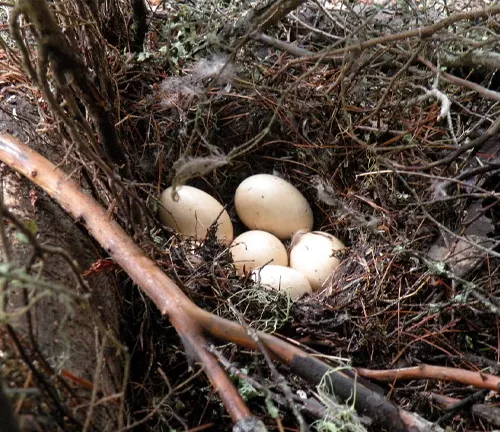
- After pair bonding, females select suitable nesting sites in secluded areas near water sources, such as rocky outcrops, riverbanks, or dense vegetation. They construct nests using a combination of plant material, feathers, and down, lining the interior with soft materials for insulation.
- Nests are typically located in concealed locations to minimize predation risk and provide protection for eggs and young chicks. Females invest considerable time and effort in nest building, ensuring a safe and secure environment for incubation and brooding.
Incubation and Chick Rearing
- Once the nest is complete, females lay a clutch of eggs, typically ranging from 5 to 9 eggs, depending on environmental conditions and food availability. Incubation periods last around 28 to 30 days, during which females remain dedicated to the task of keeping the eggs warm and protected.
- After hatching, chicks are precocial and capable of leaving the nest shortly after birth. They are led by the female to nearby water sources, where they begin feeding and exploring their surroundings under the watchful eye of their parents.
- Both parents play a role in caring for the young, providing protection, guidance, and food until the chicks are capable of fending for themselves. This parental care ensures the survival and well-being of the offspring during the critical early stages of development.
Conservation Status
Harlequin Ducks are currently listed as a species of “Least Concern” on the International Union for Conservation of Nature (IUCN) Red List. This designation indicates that overall populations of Harlequin Ducks are considered stable and not facing imminent threats of extinction. However, it is important to note that certain localized populations and subspecies may be at greater risk due to specific threats and habitat disturbances.
Despite their relatively stable status, Harlequin Ducks face a range of conservation challenges and threats to their long-term survival, including:
- Habitat Loss and Degradation: The degradation and loss of freshwater habitats due to urbanization, industrial development, and agricultural activities pose significant threats to Harlequin Ducks. Destruction of nesting sites, pollution of waterways, and alteration of natural riverine systems can disrupt breeding, foraging, and migration patterns.
- Pollution: Pollution from industrial runoff, agricultural pesticides, and oil spills can have detrimental effects on water quality and aquatic ecosystems, impacting the health and reproductive success of Harlequin Ducks. Contaminants can accumulate in their food sources, leading to bioaccumulation and toxic effects on individuals and populations.
- Climate Change: Climate change poses additional challenges for Harlequin Ducks, affecting their breeding habitats, food availability, and migratory patterns. Changes in temperature, precipitation, and sea level rise can alter the timing of breeding seasons, disrupt food webs, and modify the distribution of suitable habitats, potentially leading to shifts in population dynamics and abundance.
- Human Disturbance: Human activities such as recreational boating, fishing, and shoreline development can disturb nesting and foraging areas, causing stress and displacement for Harlequin Ducks. Nesting sites may be abandoned or compromised due to disturbances, resulting in decreased reproductive success and population declines.
Conservation efforts aimed at protecting Harlequin Ducks and their habitats include:
- Habitat Preservation: Conservation organizations work to identify and protect critical breeding, foraging, and wintering habitats for Harlequin Ducks through land acquisition, habitat restoration, and designation of protected areas.
- Pollution Mitigation: Efforts to reduce pollution and mitigate the impacts of contaminants on water quality and aquatic ecosystems are essential for safeguarding the health of Harlequin Ducks and their prey species.
- Climate Resilience: Initiatives focused on climate resilience and adaptation strategies can help mitigate the effects of climate change on Harlequin Ducks, such as restoring riparian vegetation, enhancing habitat connectivity, and monitoring population responses to environmental changes.
- Education and Outreach: Public awareness campaigns, outreach programs, and citizen science initiatives play a crucial role in engaging communities and stakeholders in conservation efforts for Harlequin Ducks. By raising awareness about the importance of biodiversity conservation and the threats facing Harlequin Ducks, individuals can take action to support their protection and conservation.
Interesting Facts
- Harlequin ducks are named after the colorful costumes worn by jesters in traditional European theater.
- Unlike many other duck species, Harlequins do not form large flocks outside of the breeding season, preferring solitary or small group foraging.
- They are highly territorial during the breeding season, vigorously defending their nesting sites from intruders.
- Despite their small size, Harlequin ducks are powerful swimmers and can navigate swift currents with remarkable agility.
Different Species
The Harlequin Duck (Histrionicus histrionicus) is a monotypic species, meaning there is only one recognized species within the genus Histrionicus. Therefore, there are no different species of Harlequin Duck.
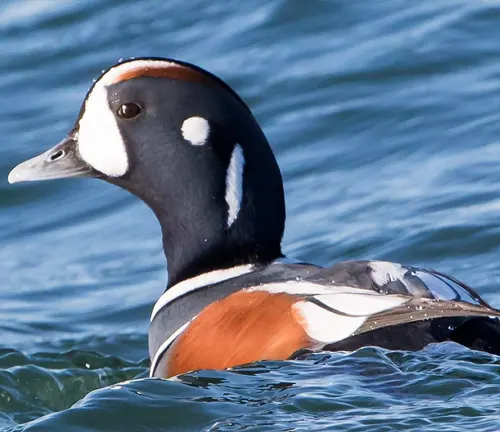
Frequently Asked Questions (FAQs)
- What is the lifespan of a Harlequin Duck?
Harlequin ducks typically live for around 10 to 15 years in the wild, although some individuals may survive longer under favorable conditions. - Why are Harlequin Ducks named as such?
They are named after the colorful costumes worn by jesters, known as harlequins, in traditional European theater, due to their striking and varied plumage patterns. - Are Harlequin Ducks good swimmers?
Yes, Harlequin ducks are excellent swimmers and divers, well adapted to navigating fast-flowing rivers and rocky coastal waters in search of food. - How can I help in the conservation of Harlequin Ducks?
You can support conservation efforts by volunteering with local wildlife organizations, reducing your carbon footprint, advocating for habitat protection, and participating in citizen science projects. - Can Harlequin Ducks be kept as pets?
Harlequin ducks are wild birds and are not suitable for captivity. In addition to being illegal to own without proper permits, they have specialized dietary and environmental requirements that cannot be met in a home setting. - Where can I see Harlequin Ducks in the wild?
Harlequin ducks can be observed in their natural habitat along rocky coastlines, fast-flowing streams, and swift rivers in regions such as Alaska, western Canada, and parts of northeastern United States. - What threats do Harlequin Ducks face in the wild?
Harlequin ducks are threatened by habitat loss, pollution, climate change, and disturbances to their breeding and foraging grounds. - Do Harlequin Ducks migrate?
Yes, Harlequin ducks are migratory birds. They breed in northern regions during the summer and migrate to coastal waters for the winter months. - How do Harlequin Ducks communicate with each other?
Harlequin ducks communicate through vocalizations such as quacks, whistles, and grunts, as well as through visual displays during courtship and territorial interactions. - What predators do Harlequin Ducks have in the wild?
Harlequin ducks may be preyed upon by various predators including eagles, hawks, mink, foxes, and large fish while nesting or during their vulnerable stages. - Are Harlequin Ducks monogamous?
Yes, Harlequin ducks are typically monogamous during the breeding season, forming pair bonds that may last for the duration of the nesting period.



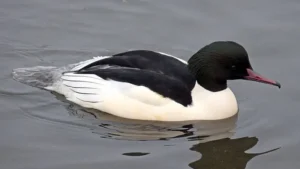
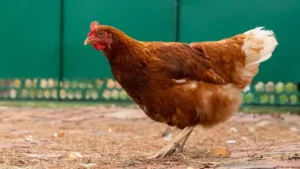
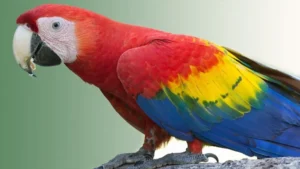
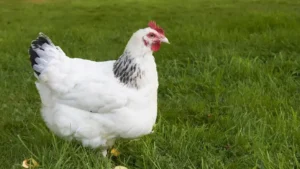
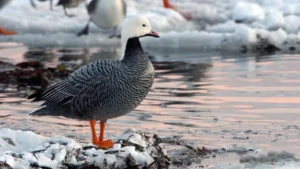
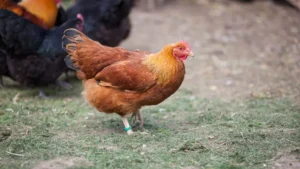

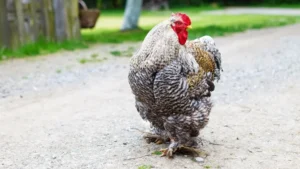
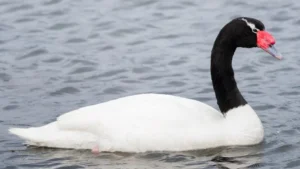

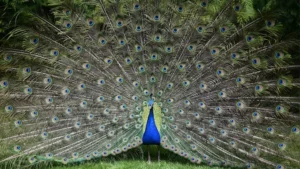
Leave your comment